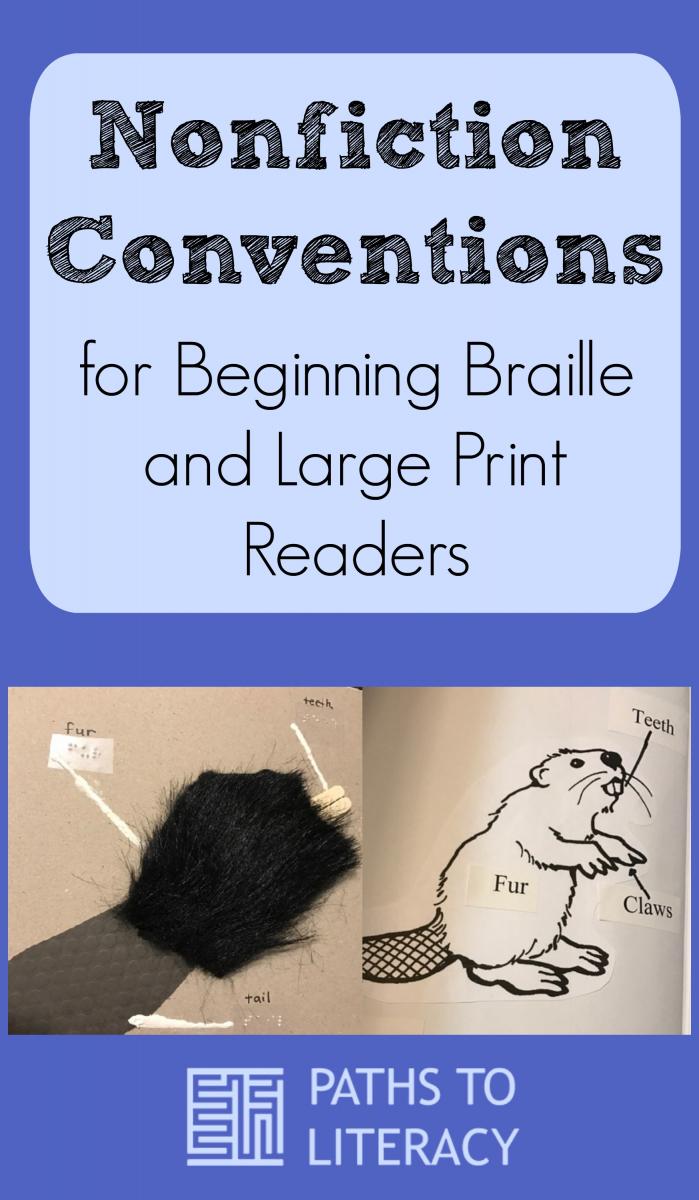Nonfiction Conventions: Braille and Large Print
Submitted by Liamsmom on Dec 04, 2017
I am the mother of a sweet and busy third grade boy named Liam. He is deafblind and a braille reader. I have been wanting to create a book for awhile now where the objective was to focus on the conventions of a nonfiction book. I wanted the conventions to be accessible to him and at his level. The "conventions" would include things that such as: Table of Contents, Glossary, page numbers, title, photographs/pictures, diagrams and labels. The books I created are simple and can be used as great first examples of those features. I was given the opportunity to create such a book when I volunteered to make a braille and large print book; both books would be about beavers (this was my first attempt at a large print book since my son is a braille reader). The books will be used for a "very cool" community project/activity for our local children with vision impairments that my son will be attending.
-
Objective One:
- The child will be able to locate and describe the following features of a nonfiction text: Table of Contents, Glossary, page numbers, title, photographs/pictures, diagrams and labels.
-
Objective Two:
- The child will be able to describe features, habitat and basic needs of a beaver.
Table of Contents:
Have a discussion about where the Table of Contents can be found and its purpose. Take turns finding specific pages in the book described in the Table of Contents.
Glossary:
Have a discussion about where the Glossary can be found and its purpose. In the braille book I added tactile 'bullets' to mark each new word, I also added a 'bullet' on the tab of the side of the book for easy identification of the glossary.
Page Number:
Locate all of the page numbers. Note how they are in the same location on every page.
Title:
Locate the title of the book.
Photographs:
Have a discussion about photographs and pictures. Explore the tactile graphics in the braille book (or explore the enlarged pictures in the large print book).
Labels:
Describe the purpose for labels. Explore the labels on the picture of the beaver. Trail the tactile lines to find the labels and what they are 'pointing' to.
A family friend who is a taxidermist generously donated some small animals and hides for me to use with my books for Liam. One of those animals happens to be a beaver!
Additional examples of conventions you could add to your nonfiction book or discussion:
- captions
- diagram
- author
- index
- graphs
- charts
- bold print


Comments
Large print and Braille non fiction book